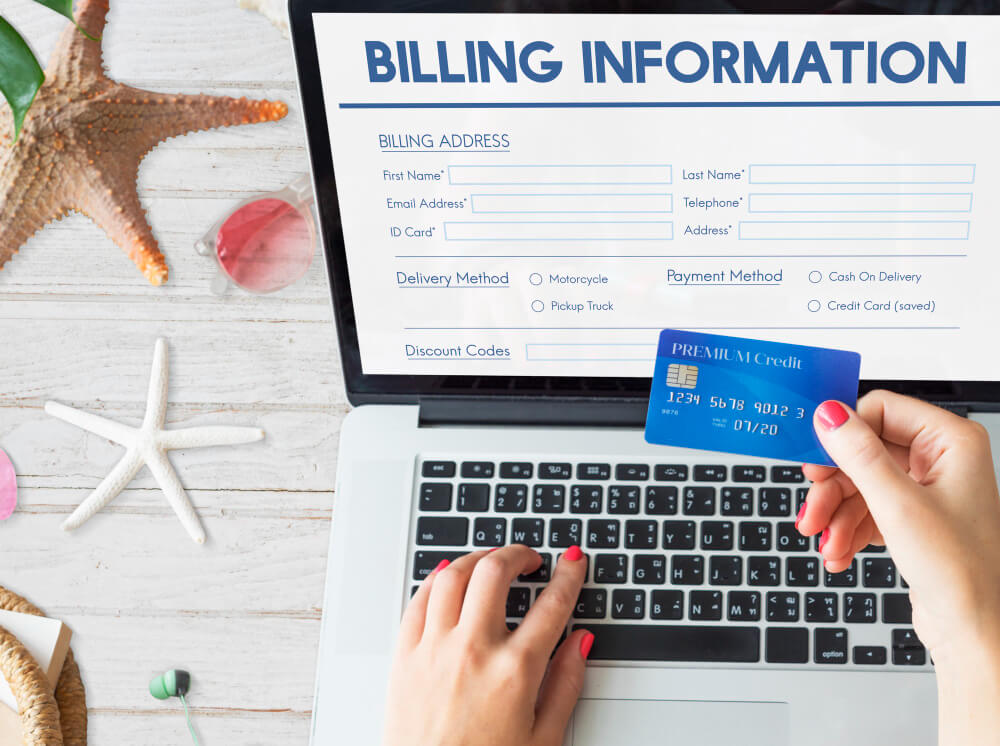
Many people wonder how to apply for bad credit catalogues, and the process is often simpler than you might think.
Whether you’re dealing with a low credit score or simply looking for more flexible payment options, this guide will help you understand the process and make informed decisions.
Let’s dive deep into common questions and concerns, practical advice, and step-by-step instructions to ensure your application process is smooth and successful.
Understanding Bad Credit Catalogues
What Are Bad Credit Catalogues?
Bad credit catalogues are retail catalogues specifically designed for individuals with poor credit histories.
They allow customers to purchase items on credit, spreading payments over time, often without the stringent credit checks associated with traditional credit providers.
Why Are They Useful?
Bad credit catalogues provide several key benefits:
- Accessibility: They cater to people with poor or no credit history, offering a lifeline when traditional credit options are unavailable.
- Credit Building: Regular, on-time payments can help improve your credit score over time.
- Flexible Payment Options: These catalogues typically offer various payment plans, including weekly, bi-weekly, or monthly payments.
Will Applying for a Bad Credit Catalogue Affect My Credit Score?
The impact on your credit score depends on the specific lender’s practices. To begin with, it’s important to understand the two types of credit checks. On one hand, some catalogues perform a soft credit check, which does not impact your credit score. Conversely, others may conduct a hard inquiry, which can temporarily lower your score.
Understanding the difference is crucial:
- Soft Check: A soft inquiry is a preliminary check that doesn’t affect your credit score. It’s often used for background checks or pre-approvals.
- Hard Check: A hard inquiry occurs when a lender reviews your credit report as part of the approval process. It can slightly lower your score and remain on your report for up to two years.
Identifying Common Concerns
High-Interest Rates
One common concern with bad credit catalogues is the high-interest rates they often charge. While these rates are typically higher than those of traditional credit options, they reflect the increased risk taken by lenders.
To mitigate this:
- Compare interest rates across different catalogues.
- Look for catalogues offering promotional periods with lower rates or interest-free options.
Hidden Fees and Charges
Ensure you understand all the associated fees before committing.
These can include late payment fees, administrative charges, and early repayment penalties.
Read the terms and conditions carefully to avoid unexpected costs.
Temptation to Overspend
With the convenience of buy-now-pay-later, it’s easy to lose track of spending.
Create a budget to manage your purchases and avoid falling into debt.
How to Apply for a Bad Credit Catalogue
Research Your Options
Thorough research is crucial. Not all bad credit catalogues are created equal. Look for catalogues that:
- Offer products you need.
- Have favourable payment terms.
- Provide clear, upfront information about fees and interest rates.
Example: Sarah, a single mom with a low credit score, needed new appliances for her home. She spent time comparing various bad credit catalogues online, reading reviews, and checking their product ranges and payment terms.
Check Eligibility Requirements
Each catalogue has its own set of eligibility requirements. Common criteria include:
- Age: You must be at least 18 years old.
- Income: Some catalogues require proof of a steady income to ensure you can meet payment obligations.
- Residency: You must be a resident of the country where the catalogue operates.
Gather Necessary Documents
Before applying, gather all necessary documents.
This typically includes:
- Proof of Identity: A valid ID such as a passport or driver’s licence.
- Proof of Income: Recent pay stubs, bank statements, or tax returns.
- Proof of Address: Utility bills or rental agreements.
Complete the Application Form
Fill out the application form on the catalogue’s website.
Be honest and accurate with the information you provide to avoid delays or rejections.
Pro Tip: Double-check all details before submitting the form. Incorrect information can lead to your application being denied.
Wait for Approval
Once you’ve submitted your application, the next step is to wait for a response. Firstly, it’s important to note that approval times can vary depending on the catalogue company. Generally speaking, you’ll typically receive a decision within a few days.
Personal Story: When John applied for a bad credit catalogue, he was anxious about the approval process. He kept checking his email every day, and after three days, he was thrilled to find out he was approved.
Manage Your Credit Responsibly
Once approved, it’s important to manage your credit responsibly:
- Make Timely Payments: Avoid late fees and build a positive credit history.
- Monitor Your Spending: Stick to your budget to prevent overspending.
- Check Your Statements: Regularly review your statements for accuracy.
Tips for a Successful Application
- Maintain Accurate Information: Ensure that all details on your application are correct.
- Stay Within Budget: Only apply for credit that you can realistically pay back.
- Use Catalogues Responsibly: Make your payments on time to build your credit score and avoid additional fees.

Catalogues to Consider
Well-Known Bad Credit Catalogues
- K&Co
- Products Offered: Electronics, clothing, home goods.
- Payment Terms: Flexible payment plans, including buy-now-pay-later.
- Interest Rates: Varies, but often includes promotional periods.
- Very
- Products Offered: Fashion, beauty, technology.
- Payment Terms: Monthly payments, interest-free for the first few months.
- Interest Rates: Competitive, with various offers.
- Studio
- Products Offered: Home and garden, toys, gifts.
- Payment Terms: Spread the cost over 12 months.
- Interest Rates: Reasonable, with special deals for new customers.
- Freemans
- Products Offered: Fashion, electricals, home and garden.
- Payment Terms: Monthly payments with the option for interest-free periods.
- Interest Rates: Transparent and competitive.
Lesser-Known Options
- BrightHouse
- Products Offered: Furniture, electronics, appliances.
- Payment Terms: Weekly or monthly payments, often with low initial payments.
- Interest Rates: Higher than average, but flexible terms.
- Jacamo
- Products Offered: Men’s fashion and accessories.
- Payment Terms: Monthly payments with promotional interest rates.
- Interest Rates: Varies based on promotional offers.
Understanding Payment Plans
Weekly Payments
Paying weekly can make larger purchases more manageable by breaking them into smaller, more frequent payments.
This option is great for those with a weekly income, allowing them to align payments with their cash flow.
Monthly Payments
Monthly payments are ideal if you receive a monthly salary.
They allow you to budget your expenses more effectively and can often come with interest-free periods if paid off within a set timeframe.
Buy Now, Pay Later
This option lets you make purchases and delay payments for a specified period.
Be cautious with this plan, as it can lead to high-interest rates if the balance isn’t paid off before the end of the interest-free period. First of all, make sure you understand the terms of the interest-free period.
Conclusion
In conclusion, bad credit catalogues can indeed be a useful tool for managing your finances, especially when traditional credit options are out of reach. Moreover, they offer an opportunity to rebuild your credit score over time. However, it’s crucial to approach these catalogues with caution. First and foremost, always read the terms and conditions carefully.
With careful planning and responsible use, they can help you rebuild your credit score and access the products you need.
Keep this guide handy as you navigate the application process, and don’t hesitate to reach out with any questions or concerns.
We’re here to help you every step of the way.
By following these steps and tips, you’ll be well on your way to successfully applying for a bad credit catalogue.
Remember, it’s all about finding the right fit for your needs and managing your credit responsibly.
Happy shopping!
Answer
How to Apply for Bad Credit Catalogues: Your Comprehensive Guide
Applying for bad credit catalogues can indeed be a straightforward process. However, it’s essential to understand the details to make informed decisions. To begin with, familiarize yourself with the application requirements. Then, carefully review the terms and conditions.
Below are five frequently asked questions (FAQs) about how to apply for bad credit catalogues, along with concise answers.
What are bad credit catalogues, and who can apply for them?
Bad credit catalogues are online or mail-order catalogues that allow individuals with poor credit histories to purchase items on credit.
These catalogues typically do not require a high credit score for approval and often offer flexible payment plans.
First and foremost, anyone with a poor credit score can apply for these catalogues, provided they meet the basic eligibility criteria. Specifically, applicants must be over 18 years old and UK residents.
How do I apply for a bad credit catalogue?
Applying for a bad credit catalogue usually involves the following steps:
- Choose a Catalogue: Select a catalogue that suits your needs and offers the products you want.
- Create an Account: Visit the catalogue’s website and create an account by providing personal details such as name, address, and contact information.
- Credit Check: Some catalogues may perform a credit check, while others may not. Ensure you understand the terms and conditions regarding credit checks.
- Approval and Shopping: Once approved, you can start shopping and choose items within your credit limit. Payment plans will be outlined based on your credit assessment.
What types of payment plans are available for bad credit catalogues?
Bad credit catalogues offer various payment plans to accommodate different financial situations.
Common plans include:
- VIP Plan: Next day dispatch with monthly repayments over 12 months.
- Premium Plan: Dispatch after three simple payments with bi-weekly repayments over six months.
- Basic Plan: Dispatch after six simple payments with bi-weekly repayments over six months.
These plans are often tailored to the individual’s credit score and risk assessment.
Are there any fees associated with bad credit catalogues?
Most bad credit catalogues aim to minimise additional fees to make their offerings more attractive to individuals with poor credit.
Typically, there are no setup costs, late fees, or cancellation fees.
However, it’s crucial to read the terms and conditions carefully to understand any potential charges that may apply. Furthermore, taking the time to thoroughly review this information will help you avoid unexpected fees.
What are the benefits and drawbacks of using bad credit catalogues?
Benefits:
- Accessibility: Available to individuals with poor credit scores.
- Flexible Payment Plans: Various repayment options to suit different financial situations.
- No or Minimal Fees: Often no setup, late, or cancellation fees.
Drawbacks:
- Potential Impact on Credit Score: Missing payments can negatively affect your credit score.
- Higher Interest Rates: Some catalogues may charge higher interest rates compared to traditional credit options.
- Limited Product Range: Some catalogues may have a limited selection of products compared to mainstream retailers.
Consequently, understanding these aspects can greatly help you make an informed decision when how to apply for bad credit catalogues.
Always ensure to read the terms and conditions and choose a plan that fits your financial situation.